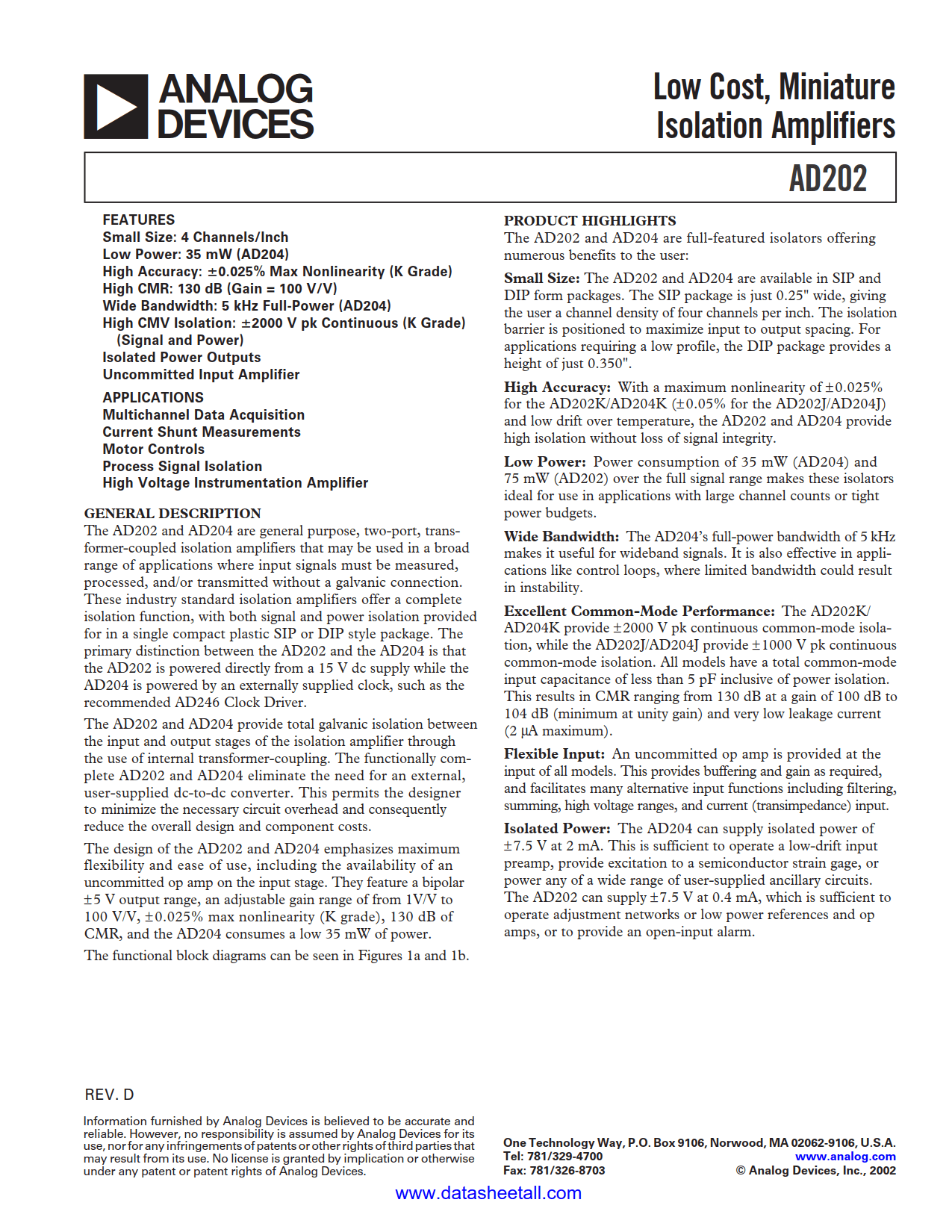
AD202 Datasheet
Low Cost, Miniature Isolation Amplifier Powered Directly From a +15 V DC Supply

Low Cost, Miniature Isolation Amplifier Powered Directly From a +15 V DC Supply
| Part No. | In Stock | Price | Packaging | SPQ | Marking | MSL | Pins | Temp Range | Package Description |
The AD202 is a general purpose, two-port, transformer-coupled isolation amplifier that may be used in a broad range of applications where input signals must be measured, processed and/or transmitted without a galvanic connection. This industry standard isolation amplifier offers a complete isolation function, with both signal and power isolation provided for in a single compact plastic SIP or DIP style package. The AD202 is powered directly from a +15 V dc supply.
The AD202 provides total galvanic isolation between the input and output stages of the isolation amplifier through the use of internal transformer-coupling. The functionally complete AD202 eliminates the need for an external, user-supplied dc/dc converter. This permits the designer to minimize the necessary circuit overhead and consequently reduce the overall design and component costs.
The design of the AD202 emphasizes maximum flexibility and ease of use, including the availability of an uncommitted op amp on the input stage. They feature a bipolar ±5 V output range, an adjustable gain range of from 1 to 100 V/V, ±0.025% max nonlinearity (K grade), 130 dB of CMR.